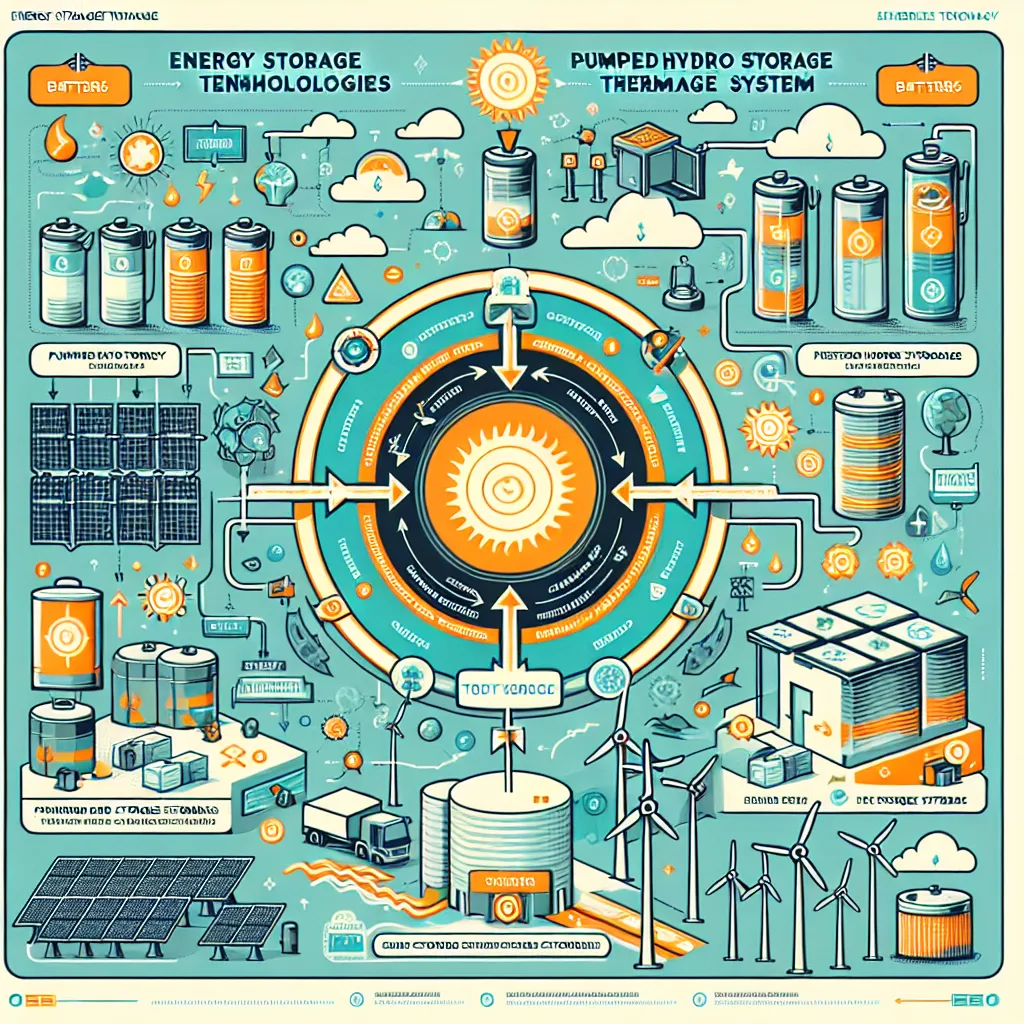Are you preparing for the IELTS Reading test and looking to improve your skills on topics related to renewable energy and technology? This practice test focuses on “How energy storage is transforming renewable energy,” a crucial subject in today’s world of sustainable development. Let’s dive into a full IELTS Reading test, complete with passages, questions, and answers to help you excel in your exam preparation.
 Energy storage transforming renewable energy
Energy storage transforming renewable energy
IELTS Reading Test: Energy Storage and Renewable Energy
Passage 1 – Easy Text
The integration of renewable energy sources into power grids has been gaining momentum worldwide. However, one of the main challenges faced by renewable energy is its intermittent nature. Wind and solar power, for instance, are not consistently available throughout the day or year. This is where energy storage comes into play, revolutionizing the renewable energy sector.
Energy storage systems act as a buffer, storing excess energy when production exceeds demand and releasing it when demand surpasses production. This balancing act ensures a steady supply of electricity, making renewable energy more reliable and grid-friendly. Various storage technologies are currently in use, including batteries, pumped hydro storage, and thermal storage systems.
Lithium-ion batteries have seen significant advancements in recent years, becoming more efficient and cost-effective. They are widely used in both small-scale applications, such as electric vehicles, and large-scale grid storage. Pumped hydro storage, on the other hand, uses the gravitational potential energy of water, pumping it to a higher elevation when excess energy is available and releasing it through turbines when needed.
As energy storage technologies continue to evolve, they are paving the way for a more sustainable and resilient energy future. The ability to store and efficiently use renewable energy is transforming the way we think about power generation and distribution, bringing us closer to a carbon-neutral world.
Questions 1-7
Do the following statements agree with the information given in the passage?
Write:
TRUE if the statement agrees with the information
FALSE if the statement contradicts the information
NOT GIVEN if there is no information on this
- Renewable energy sources are consistently available throughout the day and year.
- Energy storage systems help balance the supply and demand of electricity.
- Lithium-ion batteries are only used in small-scale applications.
- Pumped hydro storage utilizes the gravitational potential energy of water.
- Energy storage technologies are becoming less efficient over time.
- The integration of energy storage is making renewable energy more reliable.
- All countries have fully adopted renewable energy systems with storage capabilities.
Questions 8-10
Complete the sentences below.
Choose NO MORE THAN TWO WORDS from the passage for each answer.
- Energy storage systems act as a ___ to ensure a steady supply of electricity.
- The use of energy storage is making renewable energy more ___ and grid-friendly.
- The evolution of energy storage technologies is bringing us closer to a ___ world.
Passage 2 – Medium Text
The symbiotic relationship between energy storage and renewable energy is reshaping the global energy landscape. As we transition towards a more sustainable future, the role of energy storage becomes increasingly pivotal. This synergy is not only enhancing the viability of renewable energy sources but also addressing some of the most pressing challenges in the energy sector.
One of the primary benefits of energy storage is its ability to mitigate the variability inherent in renewable energy sources. Solar and wind power, while abundant and clean, are subject to the vagaries of weather and diurnal cycles. Energy storage systems can smooth out these fluctuations, storing excess energy during peak production periods and releasing it during lulls. This load-leveling effect significantly improves the reliability and dispatchability of renewable energy, making it more competitive with traditional fossil fuel-based power generation.
Moreover, energy storage is playing a crucial role in grid stabilization. As the proportion of renewable energy in the power mix increases, maintaining grid frequency and voltage becomes more challenging. Advanced energy storage systems, equipped with sophisticated control mechanisms, can respond rapidly to grid imbalances, providing essential services such as frequency regulation and voltage support. This capability is particularly valuable in microgrids and isolated power systems, where maintaining stability is paramount.
The economic implications of this transformation are substantial. By enabling greater integration of renewable energy, storage systems are helping to drive down the levelized cost of electricity from these sources. Additionally, energy storage can defer or eliminate the need for expensive grid infrastructure upgrades, providing a cost-effective alternative to traditional grid reinforcement strategies.
As technology advances, we are witnessing the emergence of novel storage solutions. Flow batteries, with their ability to decouple power and energy ratings, offer promising prospects for long-duration storage. Meanwhile, research into solid-state batteries holds the potential for safer, more energy-dense storage options. These innovations, coupled with ongoing improvements in established technologies, are expanding the possibilities for renewable energy integration and grid modernization.
Questions 11-16
Choose the correct letter, A, B, C, or D.
-
According to the passage, the relationship between energy storage and renewable energy is:
A) Competitive
B) Symbiotic
C) Unnecessary
D) Detrimental -
What is one of the main challenges of renewable energy sources like solar and wind power?
A) High cost
B) Limited availability
C) Variability
D) Complexity -
How does energy storage help improve the reliability of renewable energy?
A) By increasing energy production
B) By smoothing out fluctuations in energy supply
C) By reducing energy consumption
D) By replacing renewable sources entirely -
What role does energy storage play in grid stabilization?
A) It increases energy demand
B) It replaces traditional power plants
C) It provides frequency regulation and voltage support
D) It reduces the need for renewable energy -
According to the passage, how does energy storage affect the cost of electricity from renewable sources?
A) It increases the cost significantly
B) It has no effect on the cost
C) It helps to reduce the cost
D) It makes the cost more volatile -
Which of the following is NOT mentioned as a benefit of energy storage systems?
A) Improving grid stability
B) Reducing the need for grid infrastructure upgrades
C) Enhancing the competitiveness of renewable energy
D) Eliminating the need for all fossil fuel power plants
Questions 17-20
Complete the summary below.
Choose NO MORE THAN TWO WORDS from the passage for each answer.
Energy storage systems are transforming the renewable energy sector by addressing the issue of (17) in sources like solar and wind power. These systems provide a (18) effect, which improves the reliability of renewable energy. In addition to enhancing grid stability, energy storage offers economic benefits by potentially reducing the need for expensive (19) . As technology progresses, new storage solutions such as flow batteries and (20) are being developed, further expanding the possibilities for renewable energy integration.
Passage 3 – Hard Text
The paradigm shift towards renewable energy, catalyzed by the imperative of climate change mitigation, has ushered in an era of unprecedented innovation in energy storage technologies. This transformation is not merely a technological evolution but a fundamental reimagining of our energy systems, with far-reaching implications for geopolitics, economic structures, and environmental sustainability.
The linchpin of this energy revolution lies in the ability to efficiently capture, store, and dispatch energy from intermittent renewable sources. While lithium-ion batteries have dominated the market due to their high energy density and rapidly declining costs, the quest for more sustainable and scalable solutions continues unabated. Emerging technologies such as solid-state batteries, metal-air batteries, and redox flow batteries promise to overcome the limitations of current systems, offering higher capacities, longer lifespans, and enhanced safety profiles.
Moreover, the concept of energy storage is expanding beyond electrochemical solutions. Innovative approaches like compressed air energy storage (CAES), liquid air energy storage (LAES), and gravity-based storage systems are pushing the boundaries of what’s possible in long-duration energy storage. These technologies have the potential to address the seasonal variability of renewable energy sources, a challenge that has long been considered a significant hurdle in achieving 100% renewable energy grids.
The integration of advanced energy storage systems is also catalyzing the development of smart grids and demand response mechanisms. By enabling bidirectional energy flows and real-time load balancing, these systems are enhancing grid resilience and facilitating the decentralization of energy production. This shift towards a more distributed energy paradigm is empowering consumers, transforming them from passive recipients to active participants in the energy marketplace.
Furthermore, the synergies between energy storage and electric mobility are accelerating the transition towards sustainable transportation. The concept of vehicle-to-grid (V2G) technology, where electric vehicles serve as mobile energy storage units, holds the promise of creating a symbiotic relationship between transportation and the power sector, potentially revolutionizing both industries.
The ramifications of these advancements extend far beyond the technical realm. As energy storage capabilities improve, they are reshaping global energy geopolitics, potentially diminishing the strategic importance of fossil fuel reserves and altering the balance of power in international relations. Moreover, the proliferation of energy storage technologies is catalyzing new economic opportunities, fostering the growth of clean tech industries, and creating new job markets in manufacturing, installation, and maintenance of these systems.
However, this transformation is not without challenges. The environmental impact of battery production, particularly the extraction of raw materials like lithium and cobalt, raises concerns about the sustainability of current energy storage solutions. Additionally, the integration of large-scale storage systems into existing grid infrastructure presents technical and regulatory hurdles that must be addressed to fully realize the potential of these technologies.
As we stand on the cusp of this energy revolution, it is clear that the symbiosis between renewable energy and advanced storage technologies is not just reshaping our power systems but redefining our relationship with energy itself. The journey towards a sustainable, resilient, and equitable energy future is undoubtedly complex, but the transformative potential of energy storage offers a beacon of hope in our collective effort to combat climate change and build a more sustainable world.
Questions 21-26
Complete the sentences below.
Choose NO MORE THAN TWO WORDS from the passage for each answer.
- The shift towards renewable energy is not just a technological change but a ___ of our energy systems.
- While lithium-ion batteries are currently dominant, the search for more ___ and scalable solutions continues.
- Technologies like compressed air energy storage have the potential to address the ___ of renewable energy sources.
- The integration of advanced energy storage systems is facilitating the ___ of energy production.
- The concept of ___ technology could create a symbiotic relationship between transportation and the power sector.
- The environmental impact of battery production, particularly the extraction of ___, raises sustainability concerns.
Questions 27-33
Do the following statements agree with the information given in the passage?
Write:
TRUE if the statement agrees with the information
FALSE if the statement contradicts the information
NOT GIVEN if there is no information on this
- Solid-state batteries and metal-air batteries are examples of emerging energy storage technologies.
- Compressed air energy storage and liquid air energy storage are only suitable for short-term energy storage.
- The integration of energy storage systems is hindering the development of smart grids.
- Vehicle-to-grid technology allows electric vehicles to serve as mobile energy storage units.
- Improvements in energy storage capabilities are likely to increase the strategic importance of fossil fuel reserves.
- The growth of energy storage technologies is creating new job opportunities in various sectors.
- All regulatory hurdles related to the integration of large-scale storage systems have been resolved.
Questions 34-40
Choose the correct letter, A, B, C, or D.
-
According to the passage, the main driver behind the shift towards renewable energy is:
A) Economic growth
B) Technological advancements
C) Climate change mitigation
D) Political pressure -
Which of the following is NOT mentioned as an emerging energy storage technology?
A) Solid-state batteries
B) Metal-air batteries
C) Redox flow batteries
D) Nuclear batteries -
The passage suggests that energy storage systems are:
A) Exclusively electrochemical in nature
B) Limited to short-term storage solutions
C) Expanding beyond electrochemical solutions
D) Replacing all traditional power generation methods -
How are energy storage systems changing consumers’ roles in the energy market?
A) By making energy more expensive
B) By reducing energy consumption
C) By transforming consumers into active participants
D) By eliminating the need for consumer involvement -
What potential impact does the passage suggest energy storage advancements might have on global politics?
A) Increasing conflicts over energy resources
B) Strengthening the importance of fossil fuels
C) Altering the balance of power in international relations
D) Eliminating all energy-related geopolitical issues -
Which of the following is presented as a challenge in the widespread adoption of energy storage technologies?
A) Lack of technological innovation
B) Environmental impact of battery production
C) Decreasing efficiency of storage systems
D) Oversupply of raw materials -
The overall tone of the passage regarding the future of energy storage and renewable energy is:
A) Highly skeptical
B) Neutral and unbiased
C) Cautiously optimistic
D) Overwhelmingly negative
Answer Key
Passage 1
- FALSE
- TRUE
- FALSE
- TRUE
- NOT GIVEN
- TRUE
- NOT GIVEN
- buffer
- reliable
- carbon-neutral
Passage 2
- B
- C
- B
- C
- C
- D
- variability
- load-leveling
- grid infrastructure upgrades
- solid-state batteries
Passage 3
- fundamental reimagining
- sustainable
- seasonal variability
- decentralization
- vehicle-to-grid
- raw materials
- TRUE
- FALSE
- FALSE
- TRUE
- FALSE
- TRUE
- FALSE
- C
- D
- C
- C
- C
- B
- C
This IELTS Reading practice test on “How energy storage is transforming renewable energy” provides a comprehensive overview of the topic while testing various reading skills. The passages progress from easier to more challenging texts, mirroring the structure of the actual IELTS Reading test. By practicing with such materials, you can improve your understanding of complex topics related to renewable energy and technology, while also honing your exam techniques.
Remember to pay attention to the keywords, understand the context, and practice time management when tackling these questions. For more practice on related topics, you might want to check out our articles on how renewable energy is transforming power grids and renewable energy innovations in developing countries.
Good luck with your IELTS preparation!


